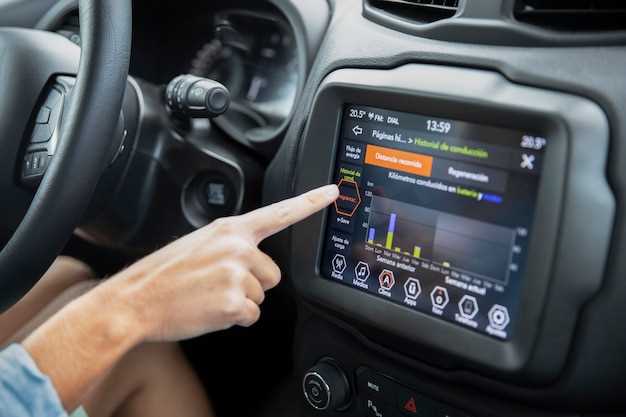
As we progress into 2025, the automotive industry continues to evolve, bringing forth a new era of driver assistance systems designed to enhance safety and improve the driving experience. The integration of advanced tech into vehicles is transforming how we interact with our cars, offering features that not only help in navigation but also actively prevent accidents and manage driver fatigue. This innovation is crucial as it directly impacts road safety and promotes responsible driving.
The best driver assistance systems of 2025 are characterized by their ability to seamlessly blend sophisticated algorithms with user-friendly interfaces. These systems utilize data from various sensors and cameras to provide real-time feedback and guidance, ensuring that drivers remain aware of their surroundings. Features such as automatic emergency braking, adaptive cruise control, and lane-keeping assistance are becoming standard, reflecting the industry’s commitment to enhancing safety.
In this article, we will explore the leading driver assistance technologies that define 2025 vehicle models. We will examine how these innovations not only enhance the driving experience but also contribute to a more secure journey on the roads. By prioritizing assistance and integrating cutting-edge tech, manufacturers are setting new benchmarks in automotive safety, making the roads safer for everyone.
Top Features to Look for in 2025 Driver Assistance Technology

As automotive technology continues to evolve, the driver assistance systems in 2025 vehicles are set to enhance both convenience and safety. A notable feature to consider is advanced adaptive cruise control, which uses tech to maintain a safe distance from the vehicle ahead while automatically adjusting speed in response to traffic. This system not only reduces driver fatigue but also minimizes the risk of accidents.
Another critical feature is lane-keeping assist, which utilizes cameras and sensors to detect lane markings. This tech helps ensure that drivers remain centered in their lanes, providing gentle steering adjustments if they begin to drift. Enhanced versions of this system may offer greater autonomy, with capabilities to steer the vehicle within its lane under certain conditions.
Additionally, look out for enhanced collision avoidance systems. These rely on a combination of radar and cameras to detect potential obstacles and can apply braking automatically if a collision is imminent. This tech is vital for improving safety, especially in urban environments where pedestrians and cyclists are prevalent.
Furthermore, 2025 vehicles will likely feature improved parking assistance technologies. These systems use sonar and cameras to guide drivers into tight spaces, significantly reducing the stress associated with parallel parking. Some models may even offer fully autonomous parking, where the vehicle can park itself with little to no driver input.
Lastly, connectivity features, such as vehicle-to-everything (V2X) communication, are becoming increasingly essential. This tech allows vehicles to communicate with each other and with infrastructure, enhancing situational awareness for drivers and contributing to overall road safety. By integrating real-time data, these systems can alert drivers to hazards and assist in navigation, thus minimizing risks on the road.
How 2025 Systems Enhance Vehicle Safety Ratings
The evolution of driver assistance technology in 2025 has led to significant improvements in vehicle safety ratings. These advancements not only provide enhanced protection for occupants but also promote safer driving behaviors. The following are key ways in which 2025 systems enhance vehicle safety ratings:
- Advanced Driver Assistance Features:
- Adaptive Cruise Control: Maintains a safe distance from vehicles ahead, reducing the risk of rear-end collisions.
- Lane Keep Assist: Alerts drivers when drifting out of their lane and can gently steer the vehicle back into position.
- Automatic Emergency Braking: Initiates braking when a potential collision is detected, minimizing damage and injury.
- Improved Sensor Technology:
2025 models incorporate a variety of sensors including radar, lidar, and cameras, which enhance the vehicle’s awareness of its surroundings. These technologies allow for:
- Better blind spot detection, reducing the likelihood of side-impact accidents.
- Enhanced pedestrian recognition systems, ensuring greater safety for those outside the vehicle.
- 360-degree visibility for more comprehensive monitoring of potential hazards.
- Integration of AI and Machine Learning:
Artificial intelligence plays a vital role in analyzing data from driver assistance systems. This integration leads to:
- Predictive analytics that anticipate driver behavior and road conditions, optimizing safety responses.
- Continuous learning from driver interactions, allowing systems to adapt and improve over time.
- Enhanced Communication Systems:
Vehicle-to-vehicle (V2V) and vehicle-to-infrastructure (V2I) communication systems allow for:
- Real-time sharing of traffic data and hazard alerts among vehicles, reducing the chances of accidents.
- Coordination with traffic signals and road conditions to improve overall traffic safety.
- Redefined Crash Test Standards:
As driver assistance technologies evolve, crash test protocols are updated to reflect their capabilities. This leads to:
- Higher safety ratings for vehicles equipped with advanced systems that can help mitigate crash impacts.
- Recognition of proactive safety measures, rewarding manufacturers that prioritize technology integration.
By leveraging these advancements in driver assistance tech, vehicles of 2025 are better equipped to handle a variety of driving situations, ultimately leading to enhanced safety ratings and a reduction in roadway accidents.
Comparing Driver Assistance Packages Across Leading Brands

As the automotive industry evolves, driver assistance systems play a crucial role in enhancing safety and comfort. Leading brands have developed unique assistance packages tailored to meet the needs of drivers. Understanding the differences in these systems helps consumers make informed choices.
Tesla offers the “Autopilot” system, which includes advanced features like Traffic-Aware Cruise Control and Autosteer. This package emphasizes safety through continuous software updates and real-time data analysis, making driving more intuitive while maintaining a strong focus on security.
BMW has introduced its “Driving Assistance Professional Package,” featuring Active Cruise Control with Stop & Go and Lane Keeping Assistant. This system prioritizes driver awareness, providing safety alerts and intervention when necessary, ensuring a seamless driving experience.
Mercedes-Benz presents the “Driver Assistance Package,” which includes Distronic Adaptive Cruise Control and Active Steering Assist. With high-level safety protocols, this package aims to minimize the risk of accidents, combining cutting-edge technology with user-friendly operation.
Ford features the “Ford Co-Pilot360” system, integrating various safety technologies such as Automatic Emergency Braking and Rear Cross-Traffic Alert. This comprehensive package is designed to enhance driver confidence and provide peace of mind in various driving conditions.
Subaru offers the “EyeSight Driver Assist Technology,” which includes features like Pre-Collision Braking and Adaptive Cruise Control. Subaru’s system is recognized for its effectiveness in preventing accidents, showcasing the brand’s commitment to driver safety.
In conclusion, comparing the driver assistance packages across these leading brands reveals distinct features aimed at enhancing safety. Each system has strengths tailored to different driving styles and preferences, emphasizing the importance of choosing the right fit for individual needs.




